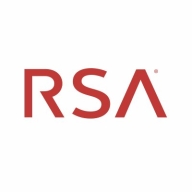


RSA Identity Governance and Lifecycle and Microsoft Entra ID compete in the identity and access management category. RSA is favored for its detailed policy enforcement, while Microsoft Entra ID has an edge due to its robust integration within the Microsoft ecosystem.
Features: RSA Identity Governance and Lifecycle offers comprehensive policy management, detailed compliance reporting, and access certification functionalities. Microsoft Entra ID provides seamless integration with Microsoft’s cloud services, single sign-on, and multi-factor authentication capabilities.
Room for Improvement: RSA could enhance integration ease and reduce complexity in deployment. Improved user interface and streamlined updates would add value. Microsoft Entra ID could benefit from more customizability outside Microsoft’s ecosystem, better documentation for third-party integrations, and enhanced support for non-Microsoft applications.
Ease of Deployment and Customer Service: Microsoft Entra ID offers straightforward deployment due to Azure integration, making it smoother for existing Azure users. RSA requires more intricate planning and customization for deployment, although it provides dedicated governance-focused support.
Pricing and ROI: RSA Identity Governance and Lifecycle has higher initial setup costs but offers high value through its compliance features. Microsoft Entra ID offers a subscription model, proving cost-effective, especially within the Microsoft environment, delivering substantial ROI for enterprises utilizing Microsoft services.
| Product | Market Share (%) |
|---|---|
| Microsoft Entra ID | 11.8% |
| Omada Identity | 3.1% |
| RSA Identity Governance and Lifecycle | 1.3% |
| Other | 83.8% |



| Company Size | Count |
|---|---|
| Small Business | 8 |
| Midsize Enterprise | 3 |
| Large Enterprise | 41 |
| Company Size | Count |
|---|---|
| Small Business | 80 |
| Midsize Enterprise | 36 |
| Large Enterprise | 132 |
| Company Size | Count |
|---|---|
| Small Business | 2 |
| Midsize Enterprise | 2 |
| Large Enterprise | 6 |
Omada Identity is an identity governance and administration (IGA) solution designed to help organizations manage and secure digital identities and access across their IT environments. It focuses on enhancing security, compliance, and efficiency by automating identity management processes.
Omada Identity offers a robust set of features that streamline identity lifecycle management, access governance, and compliance reporting. It integrates with a wide range of IT systems, applications, and data sources, providing a centralized platform for managing user identities and access rights. The solution enables organizations to enforce security policies, ensure regulatory compliance, and reduce the risk of unauthorized access.
What are the critical features of Omada Identity?
What benefits or ROI items should users look for in the reviews when evaluating Omada Identity?
Omada Identity is widely adopted across various industries, including healthcare, finance, and manufacturing. In healthcare, it helps protect patient data and comply with regulations like HIPAA. In finance, it ensures compliance with SOX and other financial regulations. In manufacturing, it secures access to sensitive production data and intellectual property.
Pricing and licensing for Omada Identity are typically based on the number of users and the specific features required. Customer support is available through various channels, including online resources, support tickets, and professional services for implementation and customization.
In summary, Omada Identity is a comprehensive IGA solution that enhances security, compliance, and efficiency in managing digital identities and access.
Microsoft Entra ID is an advanced identity and access management service offering seamless single sign-on, multifactor authentication, and centralized user access across applications, enhancing security and efficiency for organizations transitioning to cloud-based environments.
Recognized for its centralized management, Microsoft Entra ID significantly boosts organizational security by integrating features such as conditional access and identity protection. It supports a wide array of applications, facilitating a secure transition from on-premises to scalable cloud environments. By adopting robust security measures and flexible identity management, organizations can streamline operations and ensure consistent user experiences. However, challenges like confusing licensing costs, outdated documentation, and limited integration with non-Microsoft applications persist. Enhancements in technical support, interface design, and more granular permissions are needed to address these issues effectively.
What are the key features of Microsoft Entra ID?In healthcare, Microsoft Entra ID facilitates secure patient record access and compliance with industry regulations. Financial institutions rely on it for robust security measures in safeguarding client data. In the education sector, it streamlines access to online resources for students and faculty. Global enterprises benefit from its ability to manage complex identity frameworks across multiple regions, ensuring reliable security amidst increasing cyber threats.
We monitor all Identity Management (IM) reviews to prevent fraudulent reviews and keep review quality high. We do not post reviews by company employees or direct competitors. We validate each review for authenticity via cross-reference with LinkedIn, and personal follow-up with the reviewer when necessary.